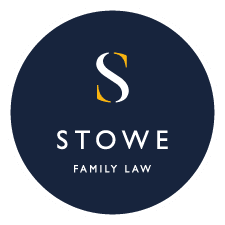Louisa Hope, from Therapy Knutsford, joins us to share insight into attachment trauma and how it can manifest in our relationships, as part of our Stowe Guests series.
As children it is our birth right to feel safe, protected, loved and nurtured, all of which support the development of secure and loving attachments. However, if these needs are not met, we can experience trauma which can have long-lasting effects on our emotional well being and the ability to build healthy relationships.
What is attachment trauma?
Attachment trauma can occur in childhood if a caregiver repeatedly gives confusing boundaries, withholds support, is neglectful or abusive. This kind of trauma can be very debilitating, diminishing our self-worth and affecting how we relate to love and connections later in life. Childhood wounding can run deep and even though as adults we may be able to rationalise our childhood experiences, we can hold onto beliefs on a deep core level that we adopted as a young child; “I’m not enough”, “I can’t have real love”, and “I’m not worthy”.
Attachment styles
Attachment trauma impacts our attachment style as adults. Instead of creating secure attachments we can become insecure when in love, needing reassurance, close proximity and constant validation. This anxious attachment style may in turn cause anxiety to increase the deeper we fall in love, with the potential to create a state of hypervigilance.
Alternatively, those who have experienced attachment trauma can develop an avoidant attachment style where they pull away from a partner when the relationship becomes too intimate or loving.
The early subconscious beliefs we carry within can remind us to keep our distance or cling on tight, and we require our partners to cater for these needs from historical wounding. Oftentimes we develop push-pull relationships where we use protest behaviour to get our needs met, causing the connection to become needy or distant, toxic and painful.
People pleasing
Trauma often goes hand in hand with poor boundary setting. We first learn how to create safe boundaries from our parents, but if these boundaries were violated or interchangeable, we may not know how to say no when something does not feel right, and we become ‘People Pleasers’.
As a result of this, we often learn to over-compensate for a lack of love and validation which can affect our own ability to create safe and loving connection. This overly accommodating behaviour is alluring to the narcissist, and other types of abusers. We often find a deep need to fill the void of love and validation created by trauma, leading us into relationships that will perpetuate old familiar patterns, reaffirming our already brittle view of relationships.
The benefits of healing
Healing attachment trauma is a phenomenally powerful way of restoring our ability to give and receive love safely, and experience authentic lasting connections.
When we heal childhood trauma we can also heal the associated attachment wounding, empowering us to move away from anxious or avoidant styles, and rebalancing towards a more secure form of attachment. This has huge benefits, such as:
- Increasing the joy we can experience in relationships
- Improving our physiology as the expectation of more trauma subsides
- Allowing our nervous systems to return to their parasympathetic state.
These benefits in turn have huge impact on our health as we are no longer on alert when in love and can relax into the arms of our loved ones and really feel deep, meaningful, secure love.
Moving forward
We know so much more about the way the subconscious mind works and how to harness its power to heal and reverse old limiting beliefs.
With support, those who have experienced attachment trauma can heal. Recognising your attachment style and it’s causes will help you build your relationships, set clear boundaries and improve your life.
Get in touch
Contact Louisa Hope at Therapy Knutsford for a free, confidential discovery call on 07510 714447 or visit therapyknutsford.com or email: [email protected]
All sessions include follow-up support.


